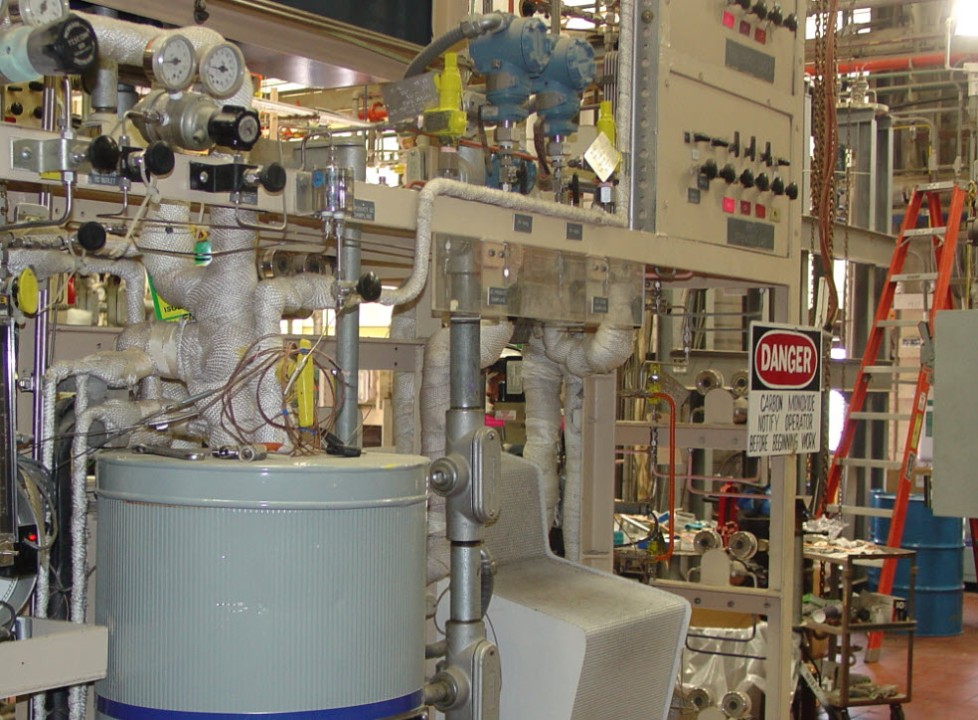
Should You Air Condition a Pilot Plant Space?
Unless you live in Hawaii or parts of California, the question always arises should you air condition your pilot plant space. While whole generations of pilot plant operators have always given a resounding yes answer, few organizations have been willing to spend the capital and operating costs just for just personal comfort. Capital costs to install air conditioning runs about $15-25/SF as you need to add a coil, chiller, pump, piping, and insulation. For a 3,000 SF pilot plant bay – a not uncommon size - that suggests a $45,000 to $75,000 capital outlay. Worse depending on your exhaust rate, climate, cooling season, and power costs you can spend $35,000-$75,000 annually to operate the system. These figures are large enough to give any organization a reason to pause.
And, aside from operator comfort, what payback does air conditioning provide for all this money? Quite a bit actually.
Unit leaks are greatly reduced since the ambient temperature stays more constant. It is not uncommon for a pilot plant bay to start a spring or fall morning at 65-70 F and end up at 80-90 F. This produces a significant strain on all the fittings. A 12” length of 304 SS tubing will want to grow 0.0018 inches and exert almost 30 psi on the fitting, trying to force it open. As the ambient temperature cools at night, the force relaxes. Over a relatively short time (days to weeks), leaks will invariably develop.
Temperature variations also create problems with seals on both static and rotating equipment making leaks more prevalent. This may have some safety implications and always has operation ones.
Instrumentation usually works better at a more constant temperature. While many modern instruments will easily operate over these temperature ranges, most will also show some increase in error. For most high end process equipment this is relatively small but not insignificant (0.1 to 1%). For some analytical instrumentation it can be higher. As a simple example, imagine three instruments used to obtain a mass balance each with an error of 0.5% over this temperature variation. The combined error results in a 1.05% total error which makes getting a 98% mass balance harder. Worse is the fact the error is changing over the day as the room heats and cools so it is not even repeatable. Attempts to “correct” or “estimate” this type of error are usually weak and unavailing despite a lot of hard work.
Ambient temperature swings also aggravate problems with condensation and vaporization in knock outs, vented vessels, and similar locations. These can also create problems in obtaining and maintaining accurate mass balances as the temperature variation makes any realistic estimating difficult to impossible. It also creates operating problems as these collection points must be emptied on a widely varying schedule. This almost always creates some issues when they are, inevitably, not drained soon enough.
Even given all these issues is it worth the extra cost? That depends on the size of your operation and how important the accuracy is. Assuming you saved 1 hour/day on leaks and seals (not unreasonable), 1 hours/week on instrument issues and avoid having to perform one extra 1.5 day run annually (set-up, cleaning, run) at a combined (fully loaded) rate of $125/hour that would translate in into an annual savings of $35,000. So not worth it for a single unit. However, if your facility had 6 units, not unreasonable for a 3,000 SF facility, the extra cost for air conditioning seems a lot more economic since, using our numbers above, you have less than a one year payback.
So, the answer to the question is a definite maybe.
Chemical Engineer | Development Engineer | Fischer-Tropsch | Biofuels | Pilot Plant Engineer | Technical Service Engineer | Maintenance/Regional Service Manager | Design Engineer | Field Engineer | CAD | EOD Technician
3yA resounding yes. But with some caveats, which Richard probably just left out. With Pilot Plants running at say 50-100 grams per hour feed rate, the surrounding ambient temperatures need to be well controlled, as Richard points out. What else needs to be controlled, air velocity within the building. Needs large volumes of moving air, but at low velocities, meaning lots of duct intakes and exhausts.
Sr. Research Technician at Lyondellbasell
3yEven when the laboratory was kept at 76F and 65% rH it was too warm with the required fire resistant lab coat or uniform.
Enjoys teamwork to ensure continues improvement by identifying, optimizing and implementing sustainable best practices
3yGood article. I am sure that joining the technicians 1 (nice & hot) day/year would be just as convincing. 😉
Business Transformation | Project Financial Assessment | Lean Six Sigma Deployment | Strategic Projects Evaluation | Business Startup | R&D Facility Project Management
3yNice article. Highlights important factors to consider that could improve quality of research and development. Something both researchers and construction management should investigate as a team. Some end users suggested and AC system that shaves off extreme conditions only, which reduces both capital and O&M cost.
Research/Development/Process Engineer | Tenacious Troubleshooter | Six Sigma Black Belt
3yTemperature cycles are particularly insidious for measurement devices with "temperature compensation/correction," because we believe the temperature changes shouldn't matter. However, the device temperature measurement *element* usually is a single point (thermocouple), whereas the *functional* measurement element (e.g., a tube, column, surface, etc.) will have a temperature gradient. The temperature compensation function likely was developed in a small, controlled lab environment where the entire device is brought to a constant temperature throughout. In an open pilot plant area, that usually isn't what happens.